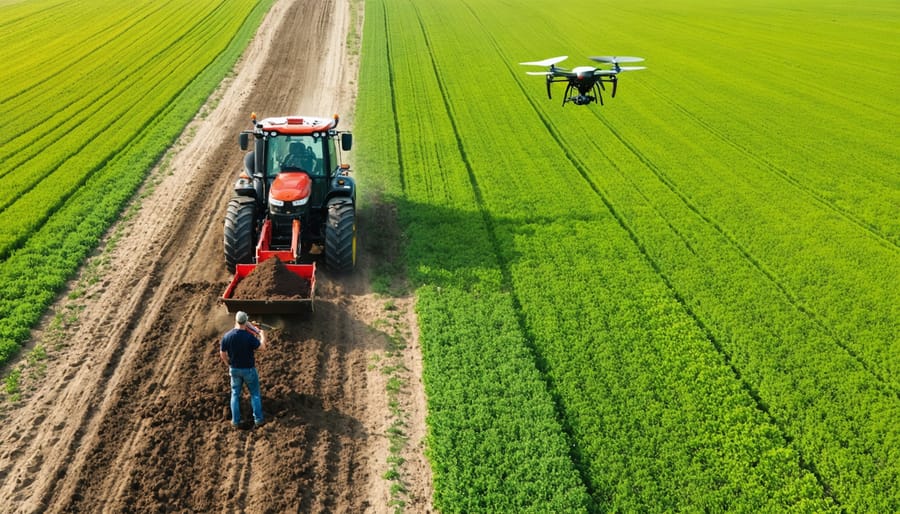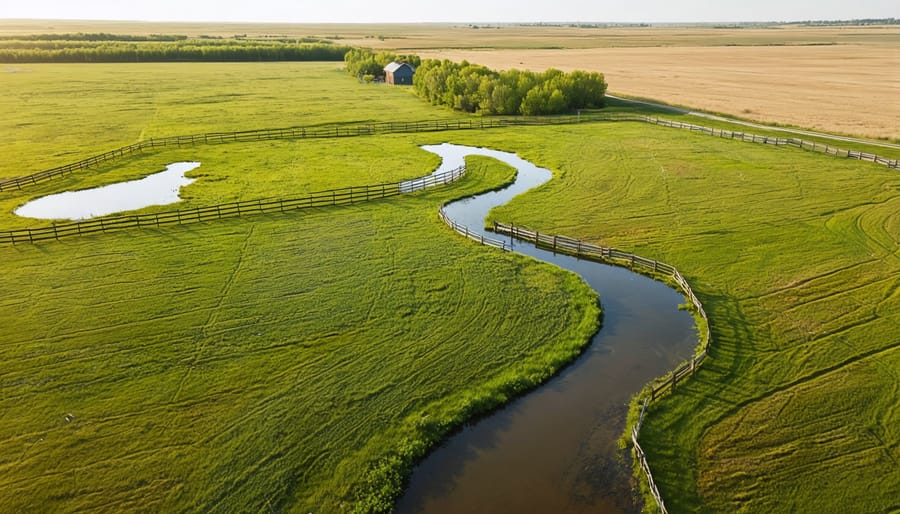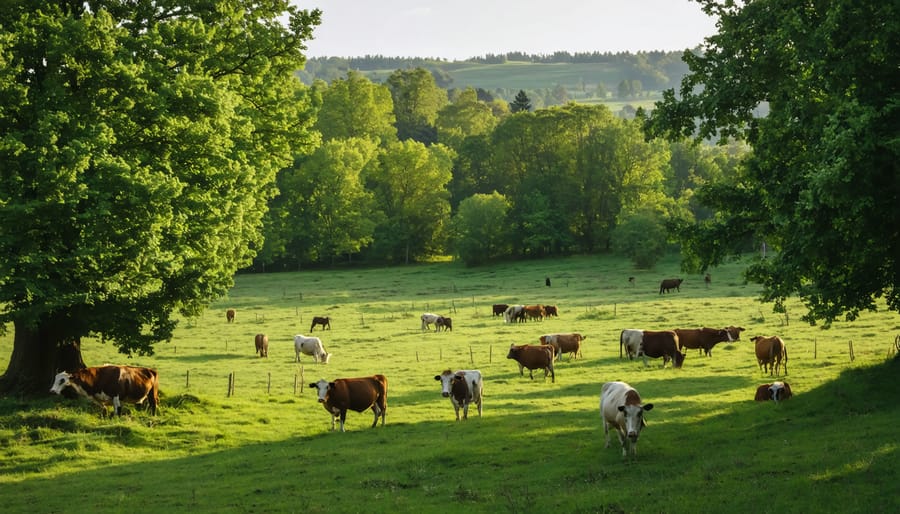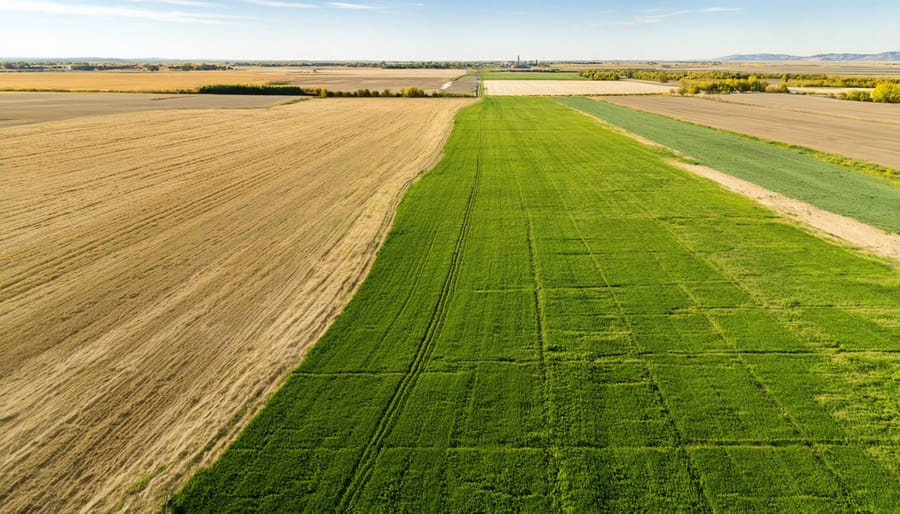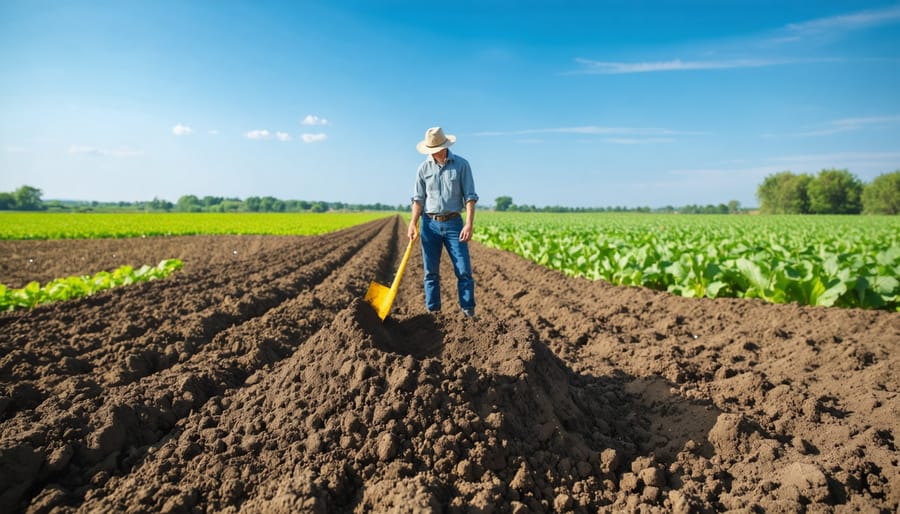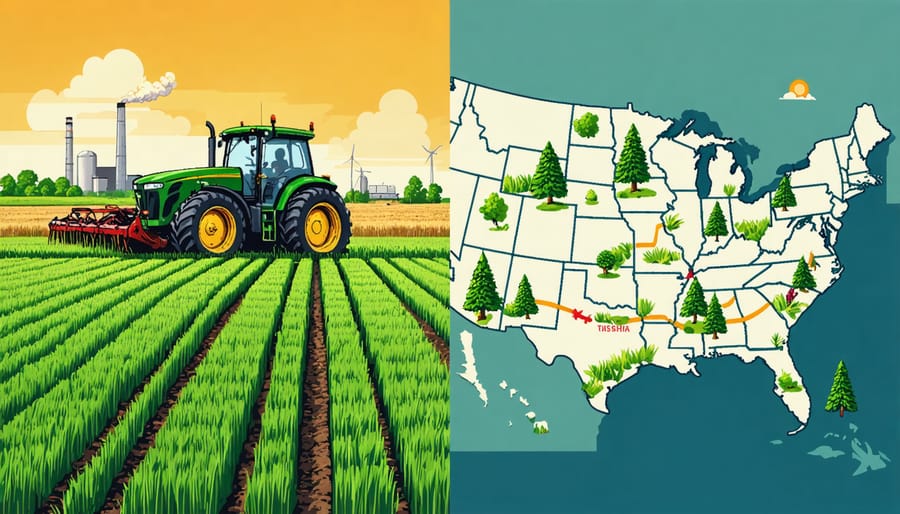Implement cover cropping to boost soil health, reduce erosion, and enhance nutrient cycling. Minimize tillage to protect soil structure, increase water retention, and promote beneficial microbial activity. Apply high-quality compost to improve soil organic matter, fertility, and overall soil vitality. Adopt precision nutrient management techniques, such as variable rate application and soil testing, to optimize fertilizer use efficiency and minimize environmental impact.
Cover Cropping for Soil Regeneration
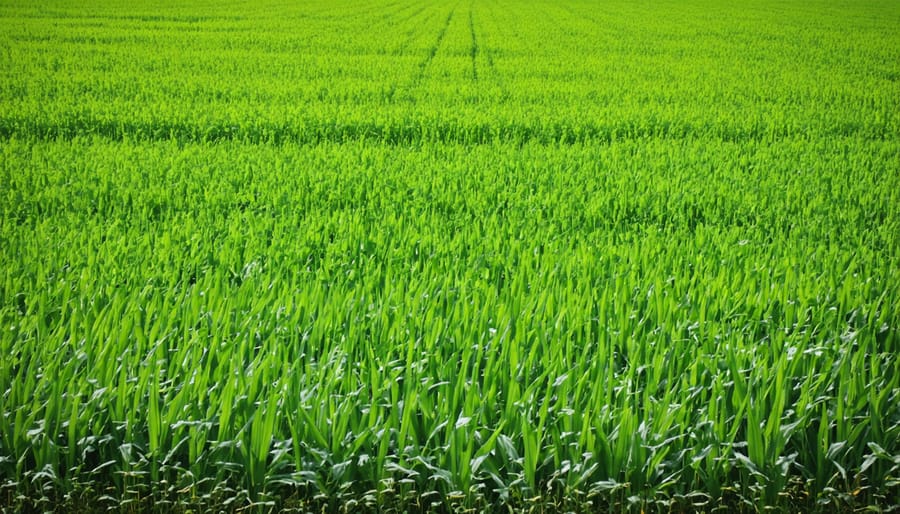
Selecting the Right Cover Crop Mix
When selecting a cover crop mix, consider your specific soil needs and farming goals. For example, if your main objective is to increase nitrogen levels, choose legumes like alfalfa, clovers, or field peas. If you want to break up compacted soil, opt for deep-rooted species such as tillage radish or sweet clover. To protect against erosion, select fast-growing grasses like rye, oats, or barley. Mixing different plant types, such as combining a grass with a legume, can provide multiple benefits. Consult with local experts, like those at Alberta Agriculture and Forestry, to determine the best cover crop species for your unique situation. They can help you create a customized mix that addresses your soil’s specific needs while aligning with your overall farming objectives. Remember to also consider factors like planting and termination dates, water availability, and potential pest issues when making your selection.
Integrating Cover Crops into Crop Rotations
Integrating cover crops into existing crop rotations can provide numerous benefits for Alberta farmers, including improved soil health, increased organic matter, and reduced erosion. To successfully incorporate cover crops, consider planting them immediately after harvesting the main crop, allowing them to establish before winter. Choose cover crop species that are well-suited to your local climate and soil conditions, such as winter cereals, legumes, or brassicas. These crops can be planted using a drill or broadcast seeder, depending on the species and desired establishment method.
When selecting cover crops, think about your specific goals, such as nitrogen fixation, weed suppression, or soil structure improvement. Mixing different species can often provide multiple benefits and create a more resilient cover crop stand. Terminate cover crops at the appropriate time, typically 2-3 weeks before planting the next cash crop, to allow for proper decomposition and avoid potential pest or disease issues. Termination methods can include herbicides, mowing, or roller-crimping, depending on the cover crop species and your management preferences.
By carefully planning and executing cover crop integration, Alberta farmers can harness the power of these innovative soil solutions to enhance the sustainability and productivity of their crop rotations.
Reducing Tillage for Soil Conservation
Minimizing tillage is a powerful strategy for protecting soil structure and preserving valuable organic matter. By reducing the frequency and intensity of tillage, farmers can maintain the integrity of soil aggregates, which are essential for healthy root growth, water infiltration, and nutrient cycling. This practice also helps to keep crop residues on the surface, acting as a protective mulch that reduces erosion and moderates soil temperature fluctuations.
Research conducted by Agriculture and Agri-Food Canada has shown that minimizing tillage can increase soil organic carbon by up to 15% over time, enhancing soil fertility and water-holding capacity. Furthermore, adopting reduced tillage practices can lead to significant cost savings on fuel, labor, and equipment wear.
To successfully implement minimal tillage, farmers may need to invest in specialized equipment like no-till drills or planters. Partnering with local agricultural extension services and attending workshops can provide valuable guidance on transitioning to reduced tillage systems. By embracing this innovative soil solution, Alberta farmers can build healthier, more resilient soils while contributing to the long-term sustainability of their operations.

Harnessing the Power of Compost and Organic Amendments
On-Farm Composting Methods
On-farm composting is a cost-effective way to recycle organic waste into nutrient-rich soil amendments. One popular method among Alberta farmers is windrow composting, which involves forming long rows of organic materials that are turned regularly to promote aeration and decomposition. This technique works well with locally available materials like straw, manure, and crop residues.
Another approach is static pile composting, where organic waste is mixed in a large heap and left to decompose without turning. This method requires less labor but may take longer to produce finished compost. Some farmers use aerated static piles, which incorporate perforated pipes or blowers to improve oxygen flow and speed up the composting process.
Vermicomposting, or composting with worms, is another innovative technique gaining traction in Alberta. Red wiggler worms efficiently break down organic waste into nutrient-rich castings that can be used as a powerful soil amendment. This method is well-suited for smaller-scale operations and can be done indoors year-round.
Regardless of the method chosen, proper management is key to producing high-quality compost. This includes maintaining optimal moisture levels, ensuring adequate aeration, and achieving the right balance of carbon and nitrogen-rich materials. By composting on-farm, Alberta farmers can close the loop on their organic waste streams while building healthier, more resilient soils.
Precision Nutrient Management
Precision nutrient management is a game-changer for Alberta farmers looking to optimize fertilizer use and boost crop yields. By leveraging cutting-edge tools like GPS-guided variable rate applicators, farmers can apply just the right amount of nutrients precisely where they’re needed. This not only saves money on inputs but also reduces the risk of nutrient runoff and environmental damage.
Soil testing is the foundation of precision nutrient management. Regular soil tests provide a detailed map of your fields’ fertility, allowing you to tailor fertilizer applications to specific areas. “Farmers who adopt precision soil sampling and variable rate technology can see significant improvements in both yield and input efficiency,” says Dr. Tom Jensen, Director of the North American Program at the International Plant Nutrition Institute.
In addition to soil testing, crop sensors and yield monitors can provide real-time data on plant health and nutrient needs throughout the growing season. This information helps farmers make informed decisions about mid-season fertilizer applications and plan for next year’s crop.
Innovative software platforms like Alberta-based Farmers Edge integrate all this data into user-friendly interfaces, giving farmers a comprehensive view of their operation. “Our goal is to empower farmers with the tools and insights they need to make better decisions and improve their bottom line,” explains Wade Barnes, CEO of Farmers Edge.
By embracing precision nutrient management, Alberta farmers can not only increase profitability but also demonstrate their commitment to environmental stewardship. It’s a win-win solution for the future of agriculture in our province.

The innovative soil solutions discussed throughout this article offer Alberta farmers exciting opportunities to enhance the sustainability and profitability of their operations. By adopting practices like cover cropping, reduced tillage, composting, and precision nutrient management, farmers can work with nature to support the vital soil processes that underpin crop growth and ecosystem health. Implementing these strategies not only benefits the environment but also has the potential to boost yields, reduce input costs, and improve overall farm resilience. As the agriculture industry continues to evolve, embracing these innovative approaches to soil management will be key to building a more sustainable and prosperous future for Alberta’s farming communities.

